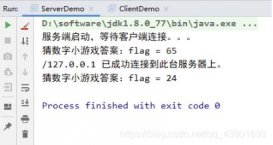本文是一个 spring 扩展支持 spel 的简单模式,方便第三方通过 spring 提供额外功能。
简化版方式
这种方式可以在任何能获取applicationcontext 的地方使用。还可以提取一个方法处理动态 spel 表达式。
|
1
2
3
4
5
6
7
8
9
10
11
12
13
14
15
16
17
18
19
20
21
22
23
24
25
26
27
28
29
30
31
32
33
34
35
36
37
38
39
40
41
42
43
44
45
46
47
48
49
50
51
|
import org.springframework.aop.support.aoputils;import org.springframework.beans.beansexception;import org.springframework.beans.factory.config.*;import org.springframework.context.applicationcontext;import org.springframework.context.applicationcontextaware;import org.springframework.context.configurableapplicationcontext;import org.springframework.context.annotation.bean;import org.springframework.context.expression.standardbeanexpressionresolver;import org.springframework.core.annotation.annotationutils;import java.lang.reflect.method;/** * 针对 spring 实现某些特殊逻辑时,支持 spel 表达式 * @author liuzh */public class spelutil implements applicationcontextaware { /** * 通过 applicationcontext 处理时 * @param applicationcontext * @throws beansexception */ @override public void setapplicationcontext(applicationcontext applicationcontext) throws beansexception { if (applicationcontext instanceof configurableapplicationcontext) { configurableapplicationcontext context = (configurableapplicationcontext)applicationcontext; configurablelistablebeanfactory beanfactory = context.getbeanfactory(); standardbeanexpressionresolver expressionresolver = new standardbeanexpressionresolver(beanfactory.getbeanclassloader()); for (string definitionname : applicationcontext.getbeandefinitionnames()) { beandefinition definition = beanfactory.getbeandefinition(definitionname); scope scope = (definition != null ? beanfactory.getregisteredscope(definition.getscope()) : null); //根据自己逻辑处理 //例如获取 bean object bean = applicationcontext.getbean(definitionname); //获取实际类型 class<?> targetclass = aoputils.gettargetclass(bean); //获取所有方法 for (method method : targetclass.getdeclaredmethods()) { //获取自定义的注解(bean是个例子) bean annotation = annotationutils.findannotation(method, bean.class); //假设下面的 value 支持 spel for (string val : annotation.value()) { //解析 ${} 方式的值 val = beanfactory.resolveembeddedvalue(val); //解析 spel 表达式 object value = expressionresolver.evaluate(val, new beanexpressioncontext(beanfactory, scope)); //todo 其他逻辑 } } } } }} |
上面是完全针对applicationcontext的,下面是更推荐的一种用法。
推荐方式
|
1
2
3
4
5
6
7
8
9
10
11
12
13
14
15
16
17
18
19
20
21
22
23
24
25
26
27
28
29
30
31
32
33
34
35
36
37
38
39
40
41
42
43
44
45
46
47
48
49
50
51
52
53
54
55
56
57
58
59
60
61
62
63
64
65
66
67
68
69
70
71
72
73
74
75
76
77
78
79
80
81
82
83
84
85
|
import org.springframework.aop.support.aoputils;import org.springframework.beans.beansexception;import org.springframework.beans.factory.beanclassloaderaware;import org.springframework.beans.factory.beanfactory;import org.springframework.beans.factory.beanfactoryaware;import org.springframework.beans.factory.config.*;import org.springframework.context.annotation.bean;import org.springframework.context.expression.standardbeanexpressionresolver;import org.springframework.core.annotation.annotationutils;import org.springframework.util.reflectionutils;/** * 针对 spring 实现某些特殊逻辑时,支持 spel 表达式 * @author liuzh */public class spelutil2 implements beanpostprocessor, beanfactoryaware, beanclassloaderaware { private beanfactory beanfactory; private beanexpressionresolver resolver; private beanexpressioncontext expressioncontext; /** * 解析 spel * @param value * @return */ private object resolveexpression(string value){ string resolvedvalue = resolve(value); if (!(resolvedvalue.startswith("#{") && value.endswith("}"))) { return resolvedvalue; } return this.resolver.evaluate(resolvedvalue, this.expressioncontext); } /** * 解析 ${} * @param value * @return */ private string resolve(string value){ if (this.beanfactory != null && this.beanfactory instanceof configurablebeanfactory) { return ((configurablebeanfactory) this.beanfactory).resolveembeddedvalue(value); } return value; } @override public void setbeanclassloader(classloader classloader) { this.resolver = new standardbeanexpressionresolver(classloader); } @override public void setbeanfactory(beanfactory beanfactory) throws beansexception { this.beanfactory = beanfactory; if(beanfactory instanceof configurablelistablebeanfactory){ this.resolver = ((configurablelistablebeanfactory) beanfactory).getbeanexpressionresolver(); this.expressioncontext = new beanexpressioncontext((configurablelistablebeanfactory) beanfactory, null); } } @override public object postprocessbeforeinitialization(object bean, string beanname) throws beansexception { return bean; } /** * 对 bean 的后置处理 * @param bean * @param beanname * @return * @throws beansexception */ @override public object postprocessafterinitialization(object bean, string beanname) throws beansexception { //获取实际类型 class<?> targetclass = aoputils.gettargetclass(bean); //获取所有方法 reflectionutils.dowithmethods(targetclass, method -> { //获取自定义的注解(bean是个例子) bean annotation = annotationutils.findannotation(method, bean.class); //假设下面的 value 支持 spel for (string val : annotation.value()) { //解析表达式 object value = resolveexpression(val); //todo 其他逻辑 } }, method -> { //todo 过滤方法 return true; }); return null; }} |
这种方式利用了 spring 生命周期的几个接口来获取需要用到的对象。
spring 生命周期调用顺序
扩展 spring 我们必须了解这个顺序,否则就没法正确的使用各中对象。
完整的初始化方法及其标准顺序是:
- beannameaware 的 setbeanname 方法
- beanclassloaderaware 的 setbeanclassloader 方法
- beanfactoryaware 的 setbeanfactory 方法
- environmentaware 的 setenvironment 方法
- embeddedvalueresolveraware 的 setembeddedvalueresolver 方法
- resourceloaderaware 的 setresourceloader 方法 (仅在应用程序上下文中运行时适用)
- applicationeventpublisheraware 的 setapplicationeventpublisher 方法 (仅在应用程序上下文中运行时适用)
- messagesourceaware 的 setmessagesource 方法 (仅在应用程序上下文中运行时适用)
- applicationcontextaware 的 setapplicationcontext 方法 (仅在应用程序上下文中运行时适用)
- servletcontextaware 的 setservletcontext 方法 (仅在web应用程序上下文中运行时适用)
- beanpostprocessors 的 postprocessbeforeinitialization 方法
- initializingbean 的 afterpropertiesset 方法
- 自定义初始化方法
- beanpostprocessors 的 postprocessafterinitialization 方法
关闭bean工厂时,以下生命周期方法适用:
- destructionawarebeanpostprocessors 的 postprocessbeforedestruction 方法
- disposablebean 的 destroy 方法
- 自定义销毁方法
灵活运用
利用上述模式可以实现很多便捷的操作。
spring 中,使用类似模式的地方有:
- @value 注解支持 spel(和 ${})
- @cache 相关的注解(支持 spel)
- @eventlistener 注解
- @rabbitlistener 注解
- …
总结
以上就是这篇文章的全部内容了,希望本文的内容对大家的学习或者工作具有一定的参考学习价值,谢谢大家对服务器之家的支持。如果你想了解更多相关内容请查看下面相关链接
原文链接:https://blog.csdn.net/isea533/article/details/84100428















